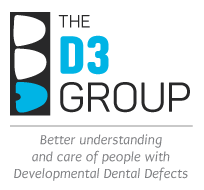Economic costs of Molar HYPOMINERALISATION

In view of its high incidence and association with tooth decay, Molar Hypomineralisation is thought to impose a substantial economic burden globally. Dental caries remains the world's most common disease and its treatment is reported to consume 5-10% of healthcare costs in developed countries (read more). It follows from the decay-risk data that Molar Hypomineralisation underlies a substantial proportion of so-called "caries" expenditure. Additional direct costs can be recognised, such as preventive treatments for milder cases of Molar Hypomineralisation, and general anaesthetics and orthodontic liabilities when extractions are necessitated by severe affliction. Indirect costs can also be ascribed, from productivity losses at school or work for example.
In a forthcoming report by members of The D3 Group, a modelling analysis of the Australian national population predicts that the treatment-cost potential of Molar Hypomineralisation is similar to national expenditure on leading cancers [1]. Perhaps more than any other measure, this huge financial cost underscores the broad impact of Molar Hypomineralisation on our societies.
1. MJ Hubbard et al., manuscript in preparation

